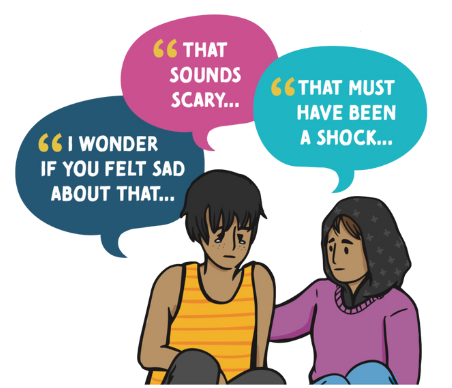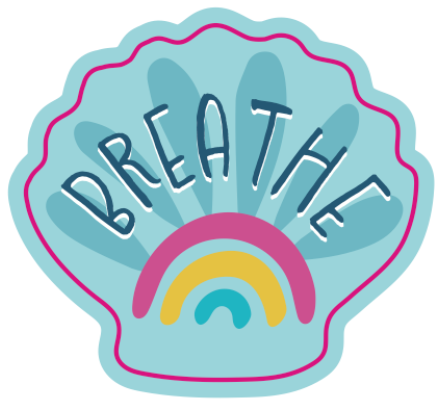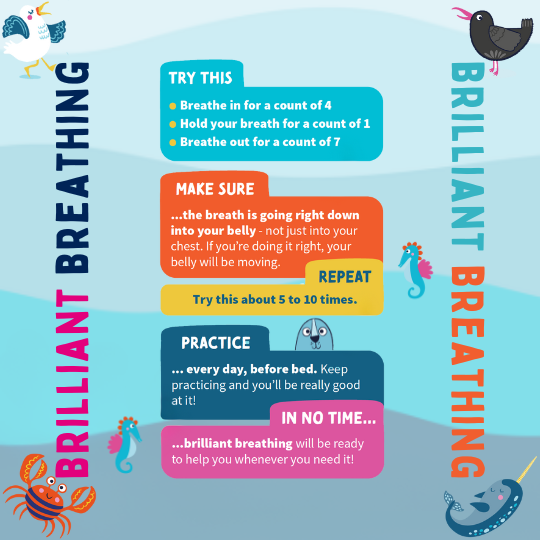Supporting a child with anxiety
- Acknowledge your child's fear. Remind them we all feel anxious sometimes.
- Talk with your child about their worries. Listen with curiosity and openness.
- Help them to understand their feelings: Try using an anxiety thermometer, diary or worksheet. These can help your child to identify their anxieties..
- Help your child understand anxiety. It can be empowering to know what is happening in their brains and bodies.
- Practice healthy coping skills with your child.
- Work on a plan together to reduce their anxious feelings
- Gently encourage your child to face their anxieties. Support them as do so.
- Encourage healthy eating, outdoor activity and good sleep.
- Take time out to have fun together and take the focus off feelings of anxiety.
- Protect your child from family worries.
Things to avoid:
- Don’t criticise your child for being afraid or worried.
- Don’t dismiss their worries as silly.
- Don’t them to ‘calm down’ or ‘relax’.
- Don’t label your child as ‘shy’ or ‘anxious’.
Language matters
We are not our feelings. We are not anxious or angry. We are feeling angry or feeling scared.
Being around adults who talk about emotions and model positive coping strategies is very helpful for a child’s wellbeing
“When I speak to kids or teens about anxiety, there are two things I hear almost every time.
The first is, ‘I thought it was just me.’ Anxiety can be so isolating. This will drive more anxiety about the anxiety.
If only every young person could know that anxiety is very human. And it happens to all of us.
TThe second thing I hear is, "I didn't know who to talk to." I respond, "Talk to an adult you trust. I promise, at some point in their lives - probably many points, maybe even today - they would have felt the way you do."”
Karen Young, Hey Sigmund
Listening to your child's worries...
Worries and anxieties make us feel out of control. So, it is important to help your child feel more in control. Help them to say what is happening and how they feel.
Top tips for listening
- Concentrate on what your child is saying. Turn off your phone/TV. Sit close and give them time. If you cannot listen at that moment, make a deal with your child to do so shortly and keep your promise.
- Let your child talk. Try not to interrupt with your own point of view.
- Don’t dismiss their worries or say things like ‘of course, XYZ won’t happen.'
- Show you're listening. Comment on what they are saying. Use 'feeling' words (like in the speech bubble below).
- Check that you heard them right. 'You worry that something bad will happen when you walk to school alone. Is that right?'
- You don’t have to know the answer there and then. You can tell your child you will think about it. Then, tell when you’ll talk again. E.g. after tea or tomorrow.


Why breathing is a 'superpower'
When the amygdala (the brain's anxiety centre) sounds a 'false' alarm, it 'takes over.' It stops us from using our thinking brain.
The most powerful way we can make ourselves the ‘boss’ of our brain again is to breathe. Slowly and deeply.
It sounds so simple – and it is...
*** But ***
Many children don’t get to learn why it helps. They also need help to practice when they are calm and in control. So, they don’t think it works (or it is 'stupid'!)
How to help
- Explain that good strong breathing is the most powerful way to calm an upset amygdala and, help get our ‘thinking brain’ back (and that is a scientific fact!).
- Help them practice. Practice with them (little and often works well).
- Help them find a breathing activity they enjoy and can do.
